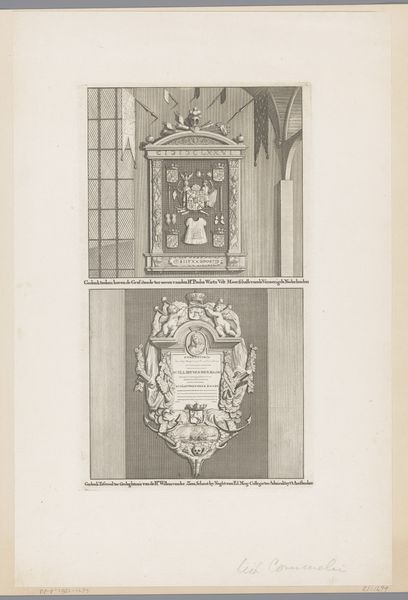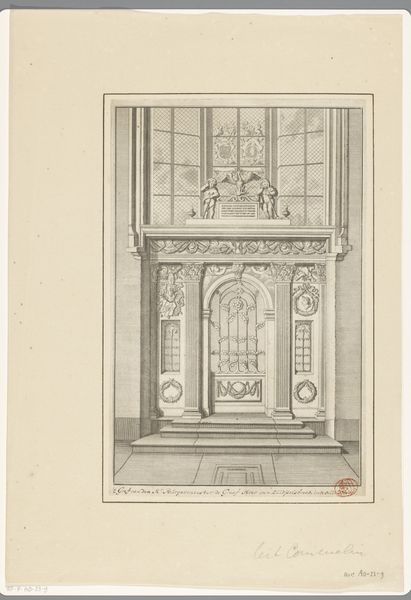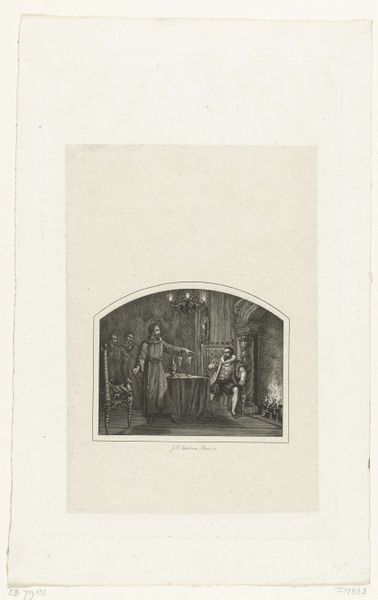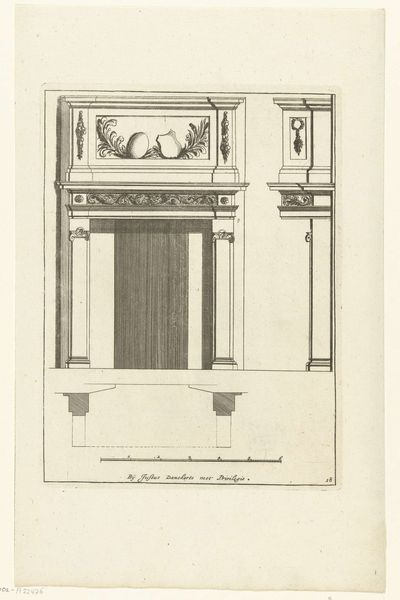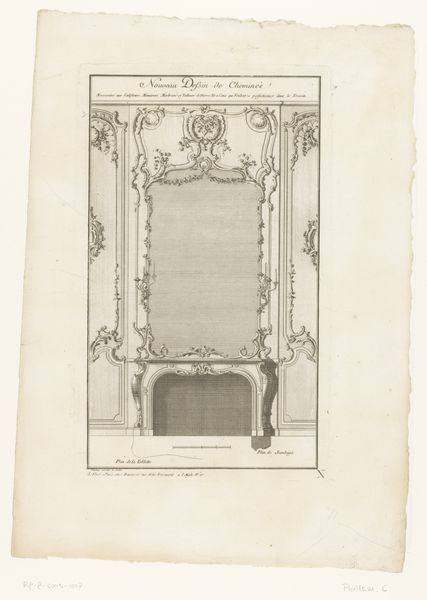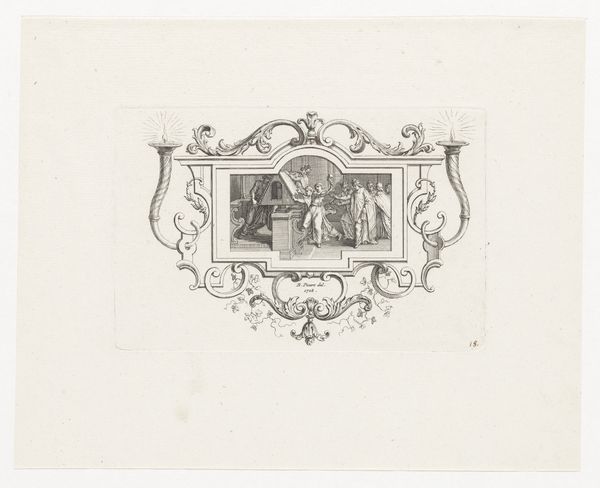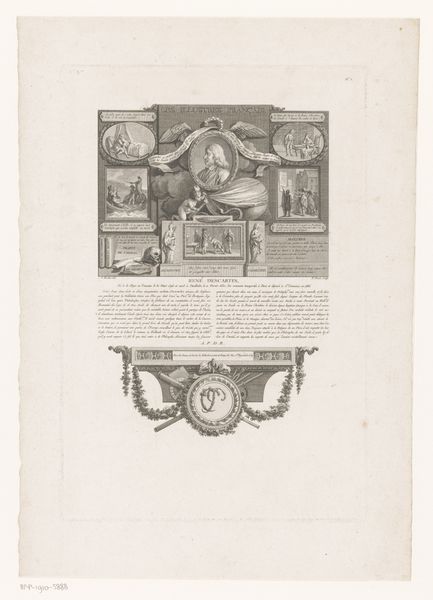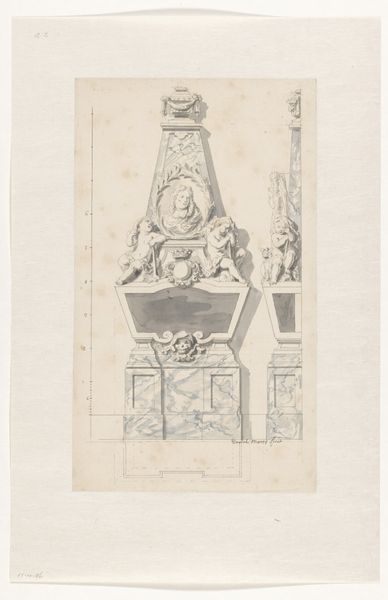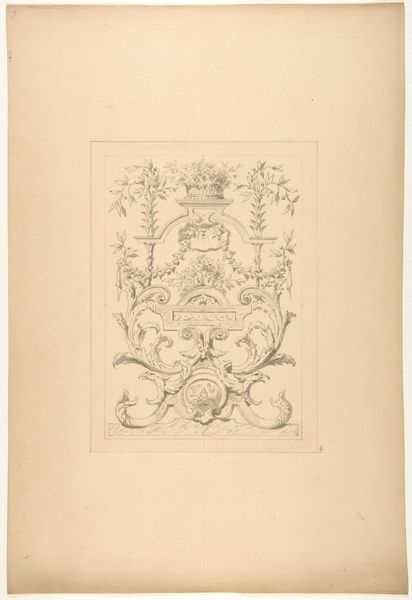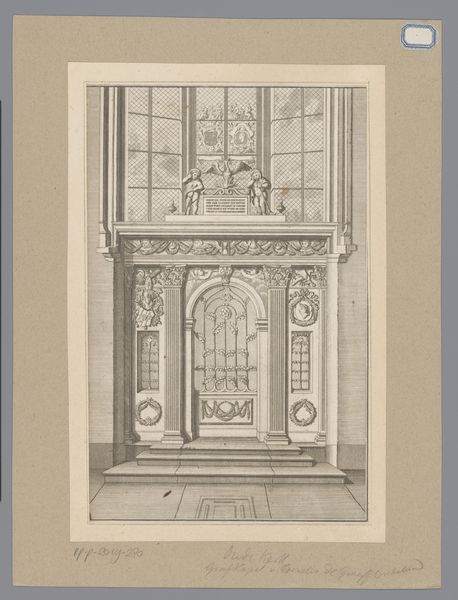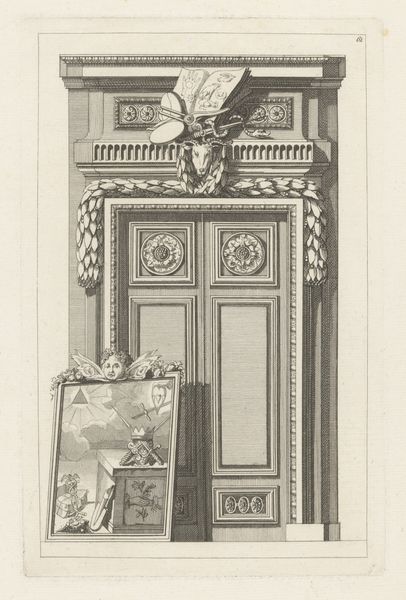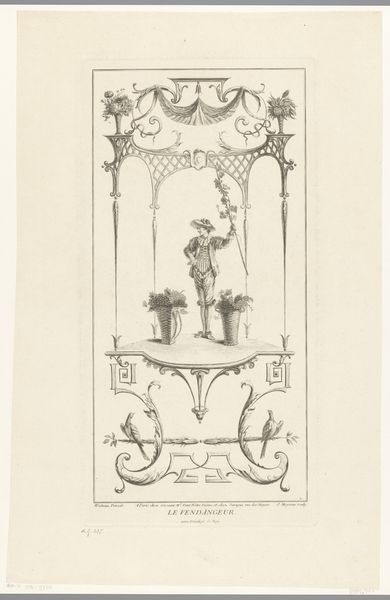
Grafmonumenten van veldmaarschalk Paulus Wirtz en schout-bij-nacht Willem van der Zaan in de Oude Kerk te Amsterdam 1693 - 1726
0:00
0:00
print, engraving
#
baroque
# print
#
old engraving style
#
geometric
#
genre-painting
#
history-painting
#
engraving
Dimensions: height 283 mm, width 162 mm
Copyright: Rijks Museum: Open Domain
This print depicts two elaborate funerary monuments, likely made of carved stone or marble, installed inside Amsterdam’s Oude Kerk. The unknown printmaker used the technique of etching, a process that involves coating a metal plate with wax, drawing through the wax to expose the metal, and then immersing the plate in acid. The acid bites into the exposed lines, creating grooves that hold ink. The dense network of fine lines allows for a great deal of detail, evident here in the heraldic crests, drapery, and sculpted figures adorning the memorials. Consider the labor involved: the quarrying and transport of stone, the carving, the gilding of details, and the engraving of inscriptions. These monuments weren’t just about commemorating individuals; they were about projecting power and status, both earthly and divine. The commission of such elaborate memorials was a statement in itself, reflecting the wealth and social standing of the deceased and their families. So, next time you encounter a work of art, remember to look beyond the surface and consider the story of its making. By understanding the materials, processes, and social context behind an artwork, we can gain a richer appreciation for its meaning and significance.
Comments
No comments
Be the first to comment and join the conversation on the ultimate creative platform.
